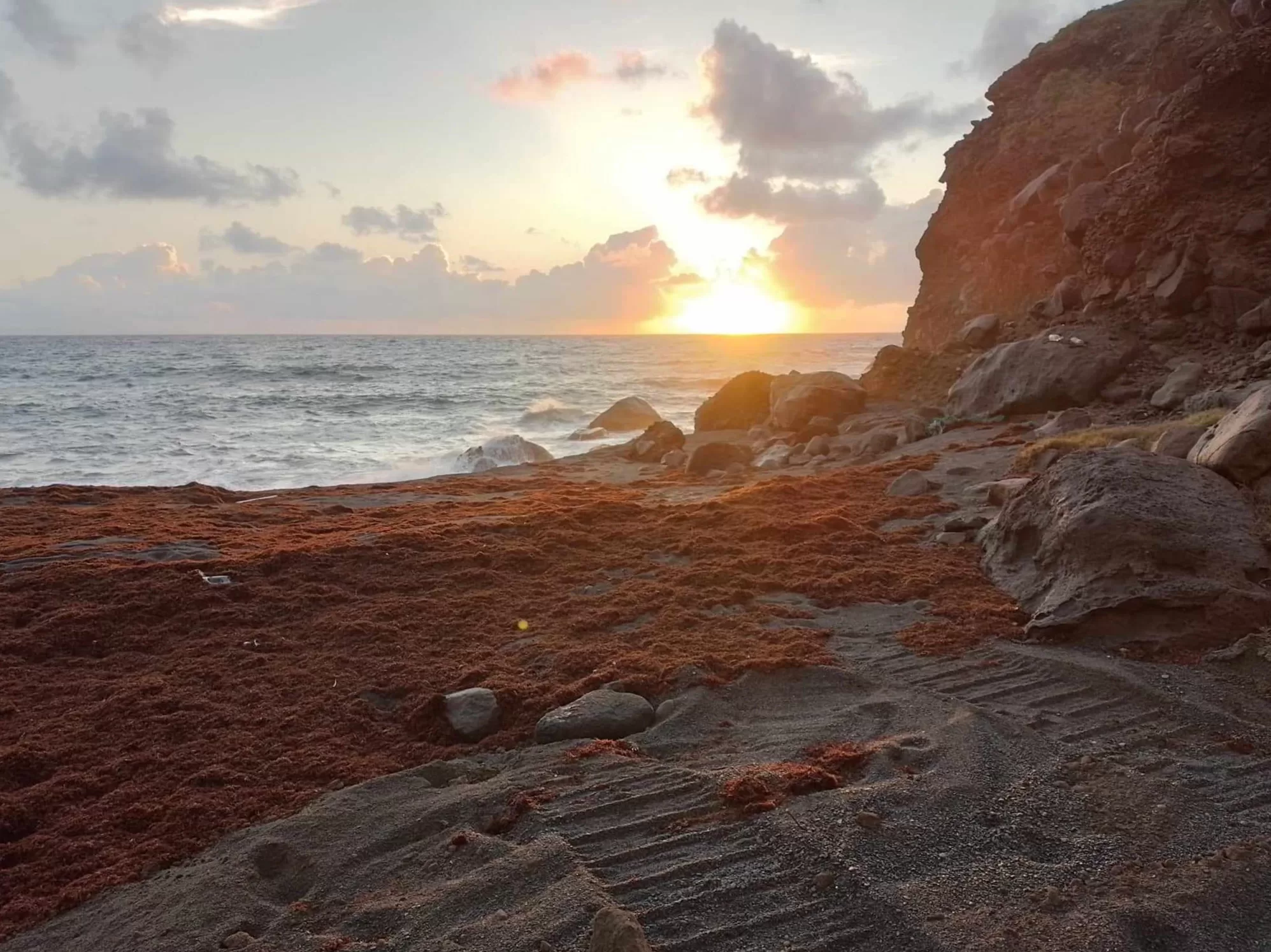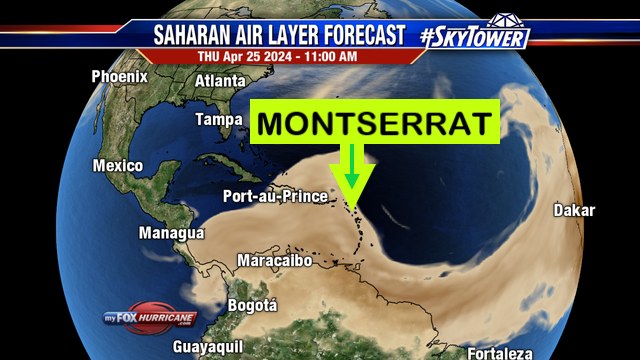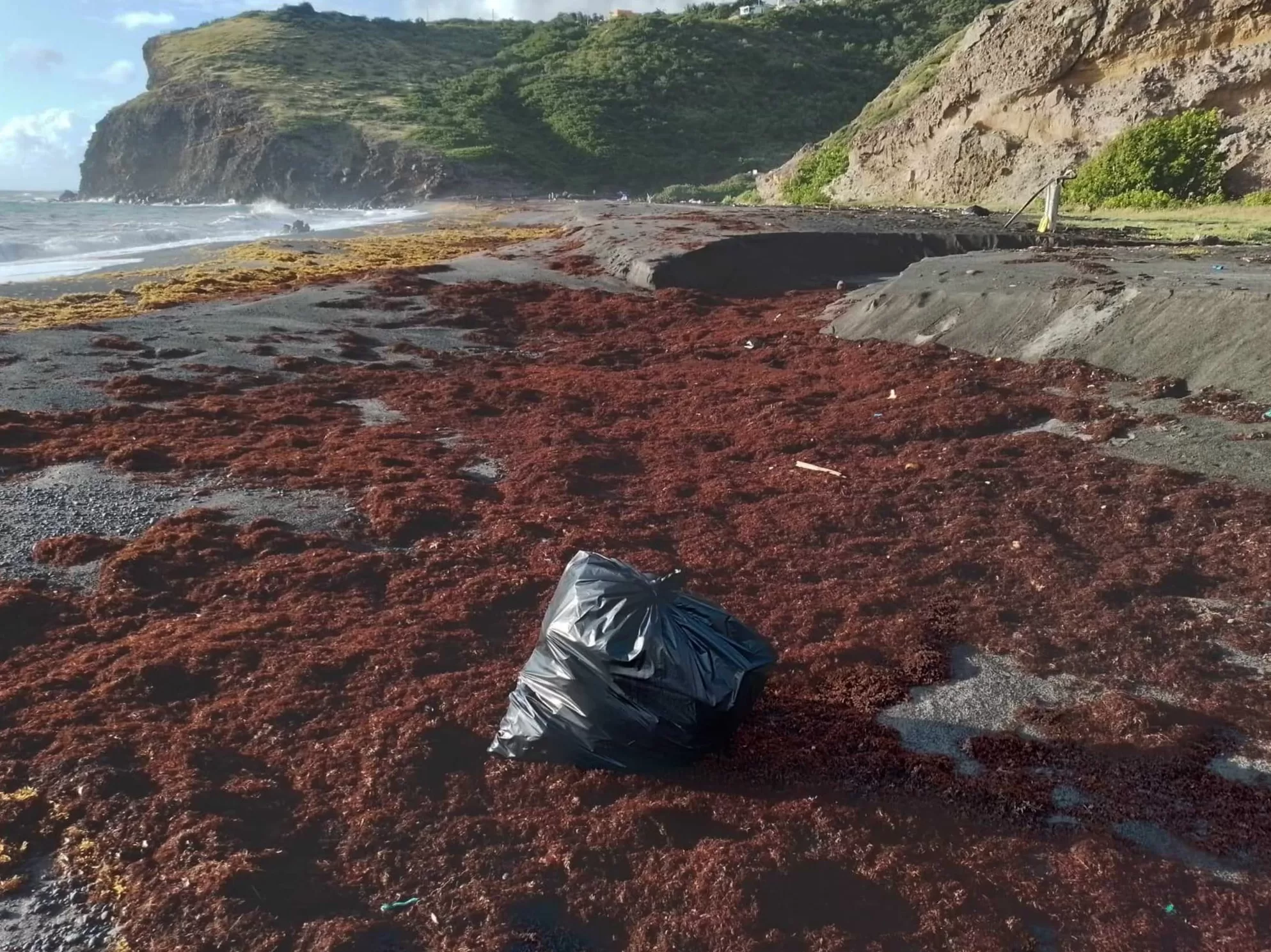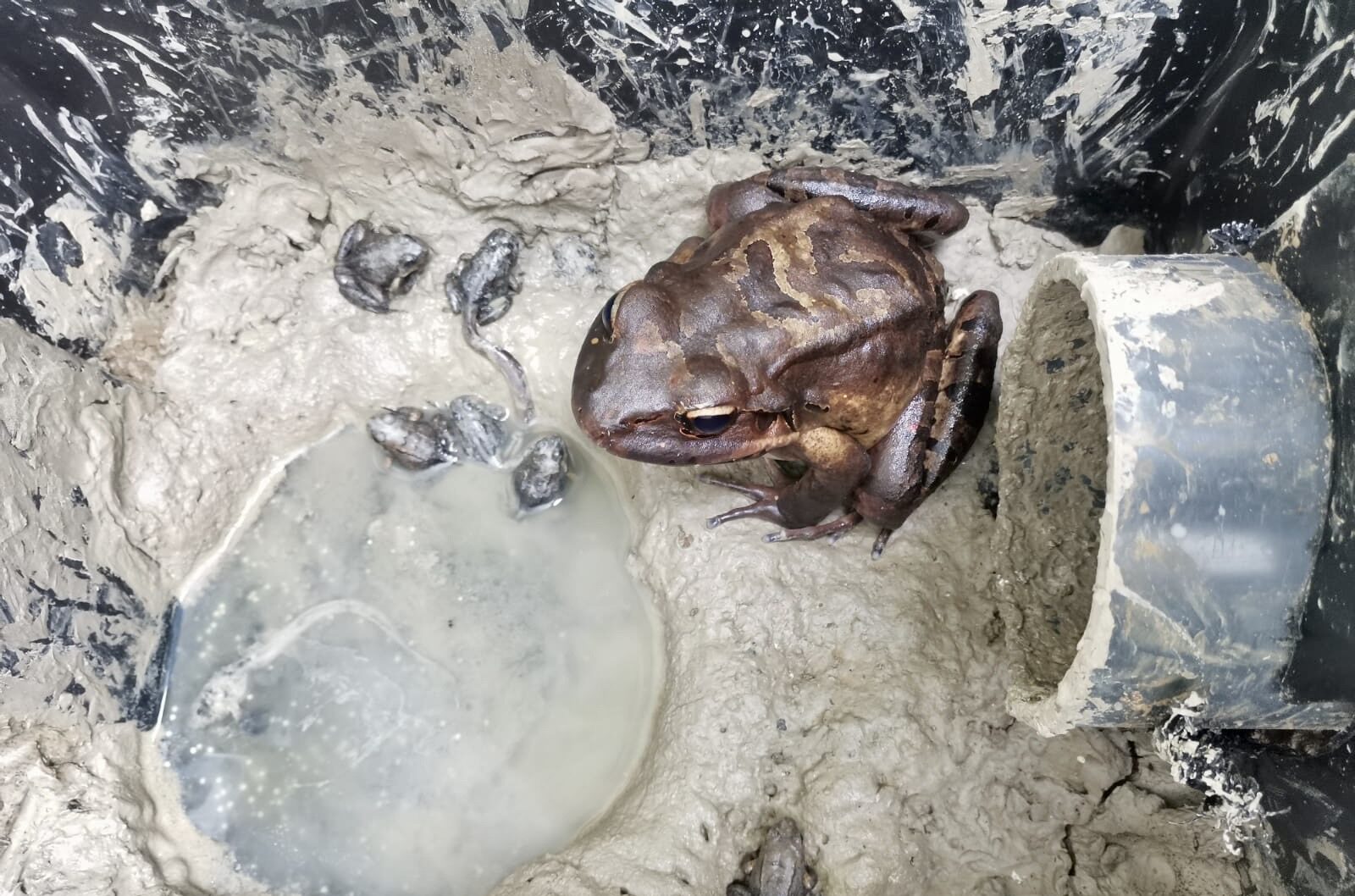The amount of sargassum washing up on Montserrat’s beaches is expected increase in April and May, according to experts.
The Caribbean Coastal Ocean Observing System has said it expects growth of the seaweed as the primary sargassum bloom in the interior central Atlantic continues to expand.
“This bloom will continue to migrate westward, with an increased sargassum amount in the Caribbean Sea,” the observation network’s website said.
“We will closely monitor and track sargassum throughout the central Atlantic and provide more summary updates at the end of each month.”
Montserrat’s Disaster Management Coordination Agency (DMCA) has warned beachgoers to “take the necessary precautions” around the large brown seaweed masses.
“As it decomposes it releases a substance called hydrogen sulphide which has an unpleasant odour like rotten eggs,” it said in a Facebook post on 2 April.
“Although the seaweed is not a toxin-producing-algae and will not harm your health, tiny sea creatures living in sargassum may cause skin irritations etc.”
Noxious gas
The DMCA offered several pieces of advice for anyone planning to go in or near the sea.
It said to avoid touching or swimming near the seaweed as tiny organisms such as jellyfish larvae could sting or cause skin to itch.
“Contact your doctor if you get stung by a jellyfish, and steer clear of the beach if you experience skin irritation,” the DMCA said.
It also advised people with asthma or other respiratory conditions to avoid beaches with large sargassum deposits as decomposing seaweed can emit noxious hydrogen sulphide.
“Those who live or work near the beach may be more likely to develop headaches or feel nauseous if sargassum is left to rot on the shore,” the government agency added.





